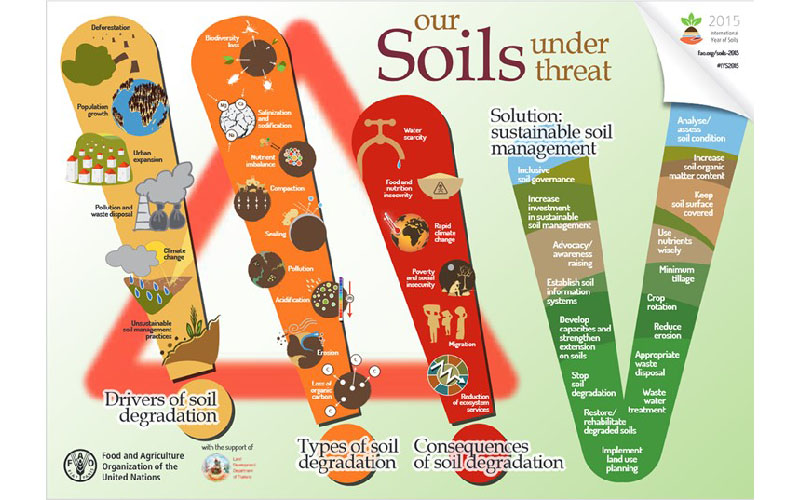Best Practice
A guide to dealing with erosion can be seen in the below table
Table info from: Basher LR 2013a. Erosion processes and their control in New Zealand. In: JR Dymond ed.
Ecosystem services in New Zealand − conditions and trends. Lincoln, New Zealand,
Manaaki Whenua Press.
Erosion type | Soil conservation principle | Erosion control practices |
Surface Erosion | Maintain ground cover Maintain soil structure | Water control Improving drainage Rotational cropping Strip cropping Use of low-ground-pressure machinery Cover crops Adjusting grazing pressure Timing cultivation |
Wind | Maintain ground cover Maintain soil structure and health to reduce erodibility Maintain surface soil moisture | Maintain ground cover Maintain soil structure and health to reduce erodibility Maintain surface soil moisture |
Shallow mass movement | Maintain root strength contribution to slope stability Reduce soil water | Space-planted trees Reversion to scrub Afforestation Adjusting grazing pressure and fencing Drainage control |
Deep-seated mass movement | Maintain root strength and slope stability Reduce soil water | Space-planted trees Reversion to scrub Afforestation Adjusting grazing pressure and fencing Drainage control Debris dams |
Gully | Control runoff Avoid exposure of bare ground in overland flow paths Reduce peak flood flows Stabilize margins | Water control Space-planted trees Reversion to scrub Afforestation Debris dams Ground recontouring |
Tunnel gully | Control runoff Manage ground cover | Water control Manage ground cover in flow paths Space-planted trees Ground recontouring |
Streambank | Maintain riparian vegetation Reduce bank undercutting and lateral migration | Tree planting of banks and riparian buffers Structural control Bank regrading Reseeding stream banks Fencing to control stock access Subsurface drainage at seepage sites |


